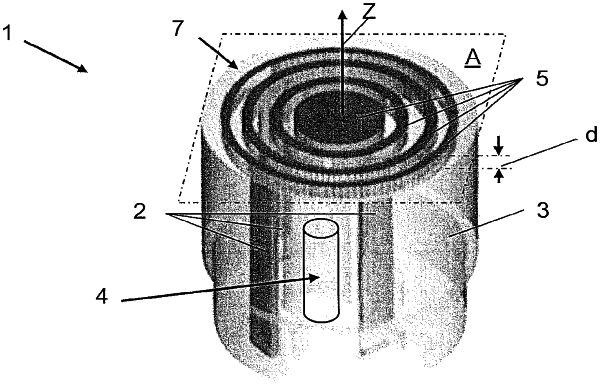| CPC G01N 27/4062 (2013.01) [B32B 38/0036 (2013.01); G01N 27/07 (2013.01); G01N 27/403 (2013.01); B32B 2305/80 (2013.01); B32B 2457/00 (2013.01); G01N 17/02 (2013.01); G01N 27/00 (2013.01); G01N 27/283 (2013.01); G01N 2203/0429 (2013.01)] | 9 Claims |

|
1. A method of manufacturing an electrochemical probe, comprising:
producing a green probe body of an electrically insulating ceramic, the probe body having:
a first end and a second end;
an axis of symmetry extending from the first end to the second end;
at least two cavities disposed in an end face of the second end;
at least two through-holes extending through the probe body from the first end to the second end and communicating with a respective cavity at the second end; and
a cavity accessible from the first end of the probe body;
providing at least two electrodes embodied of an electrically conducting material;
providing at least two connection elements embodied of the electrically conducting material, wherein each connection element is embodied to extend from the first end to the second end of the probe body through one of the at least two through-holes, and each connection element is electrically connected with one of the at least two electrodes;
pressing each electrode with its connected connection element into the probe body by pressing the electrode into one of the at least two cavities and pressing the connection element into the corresponding through-hole such that the connection element extends through the probe body to the first end and an outer surface of the electrode is flush with the end face of the second end of the probe body;
sintering together the green probe body, the at least two electrodes, and the at least two connection elements to produce a sintered probe body, wherein the sintering produces a material bonding between the electrodes and the probe body making a gap-free material transition between each electrode and the probe body;
inserting a temperature sensor into the cavity of the sintered probe body; and
joining the temperature sensor to the sintered probe body in the cavity with a thermally conductive adhesive.
|